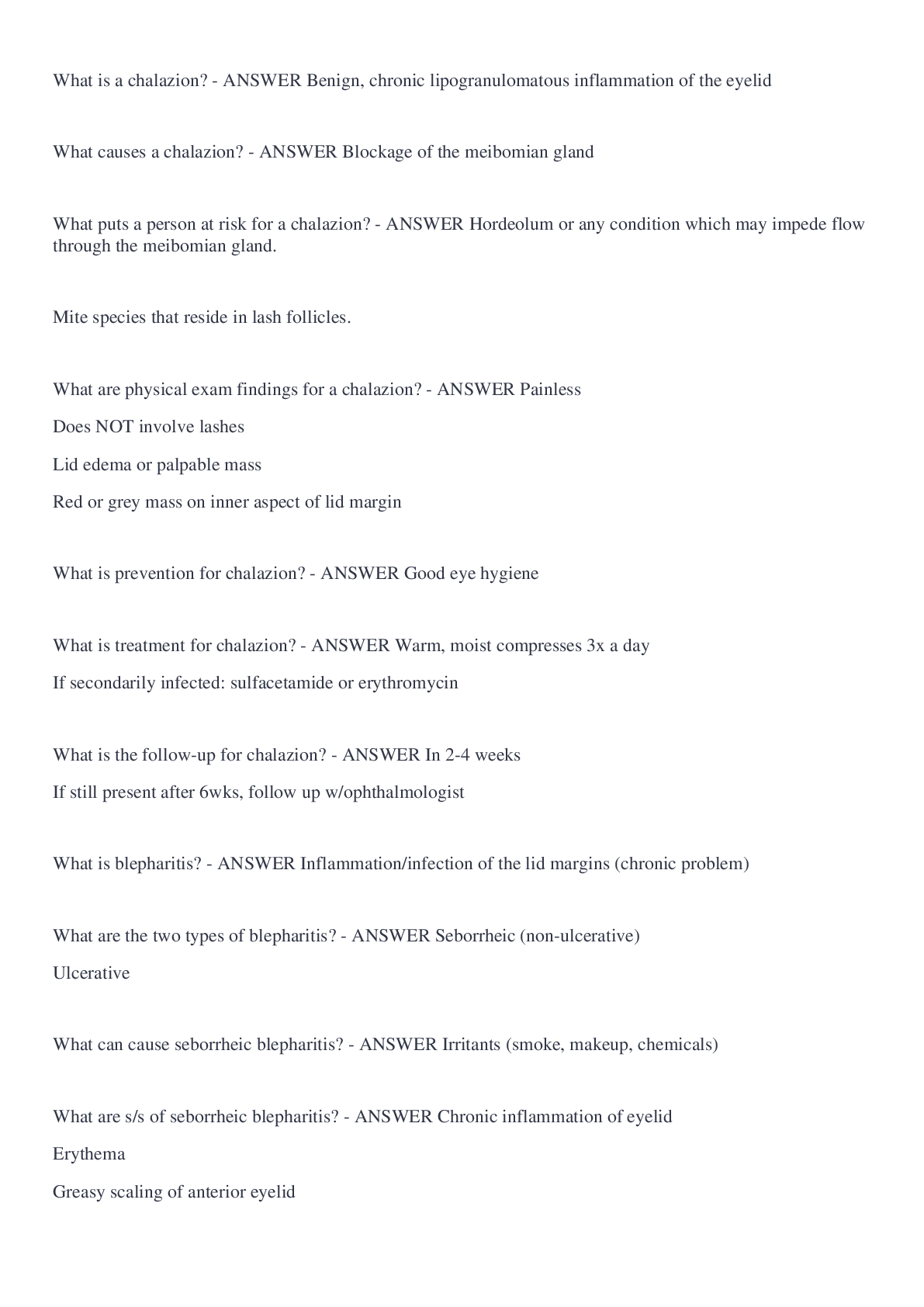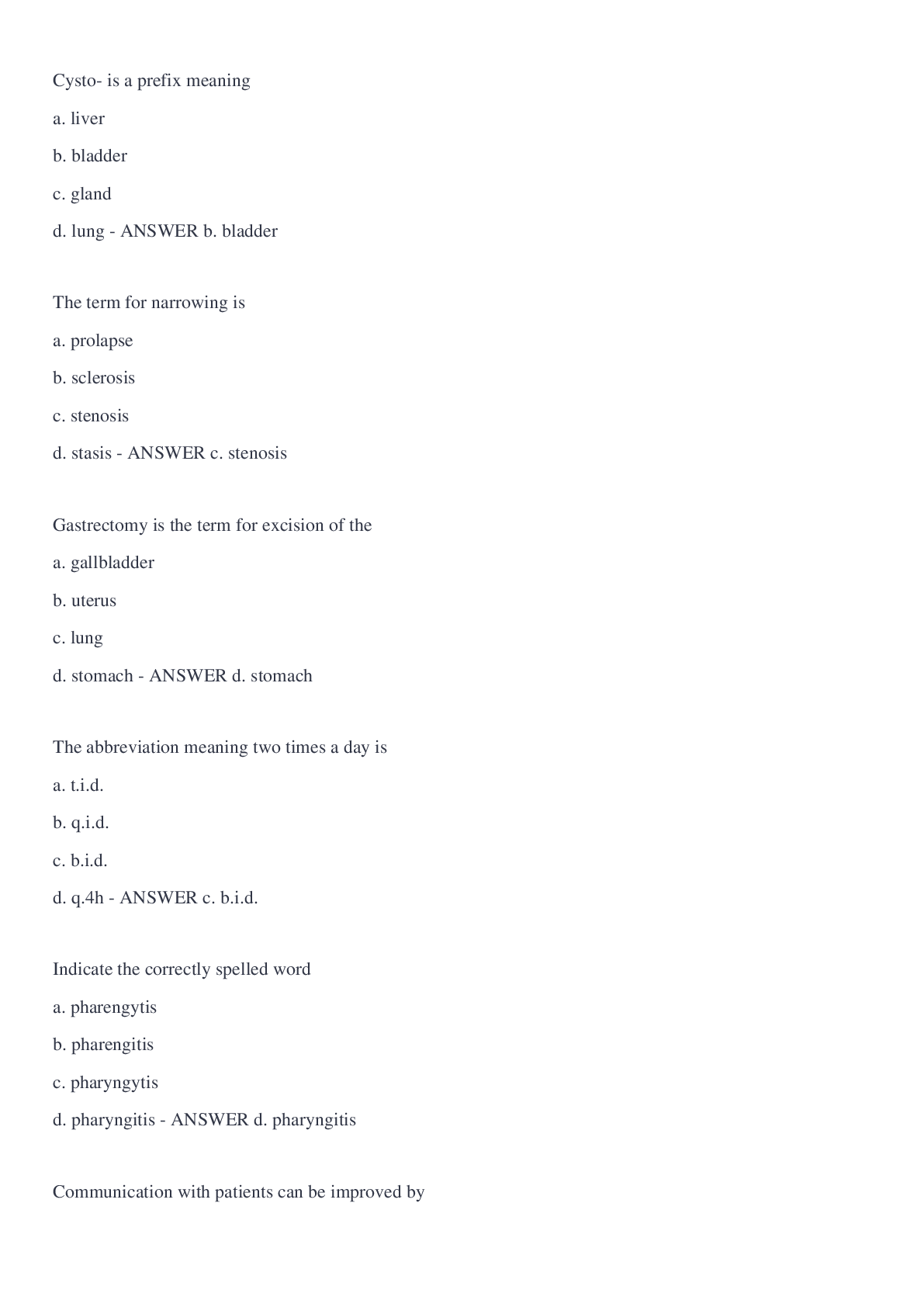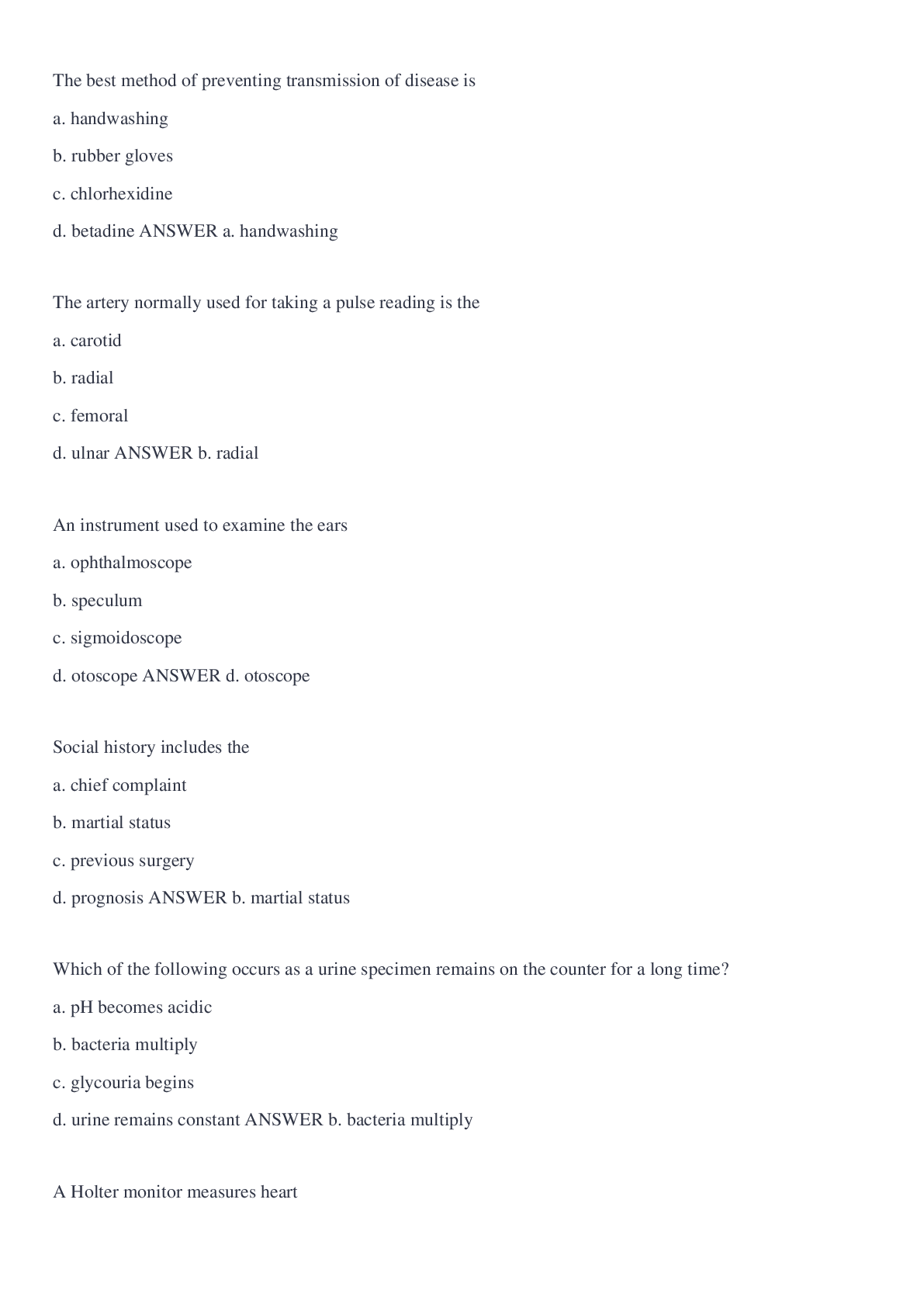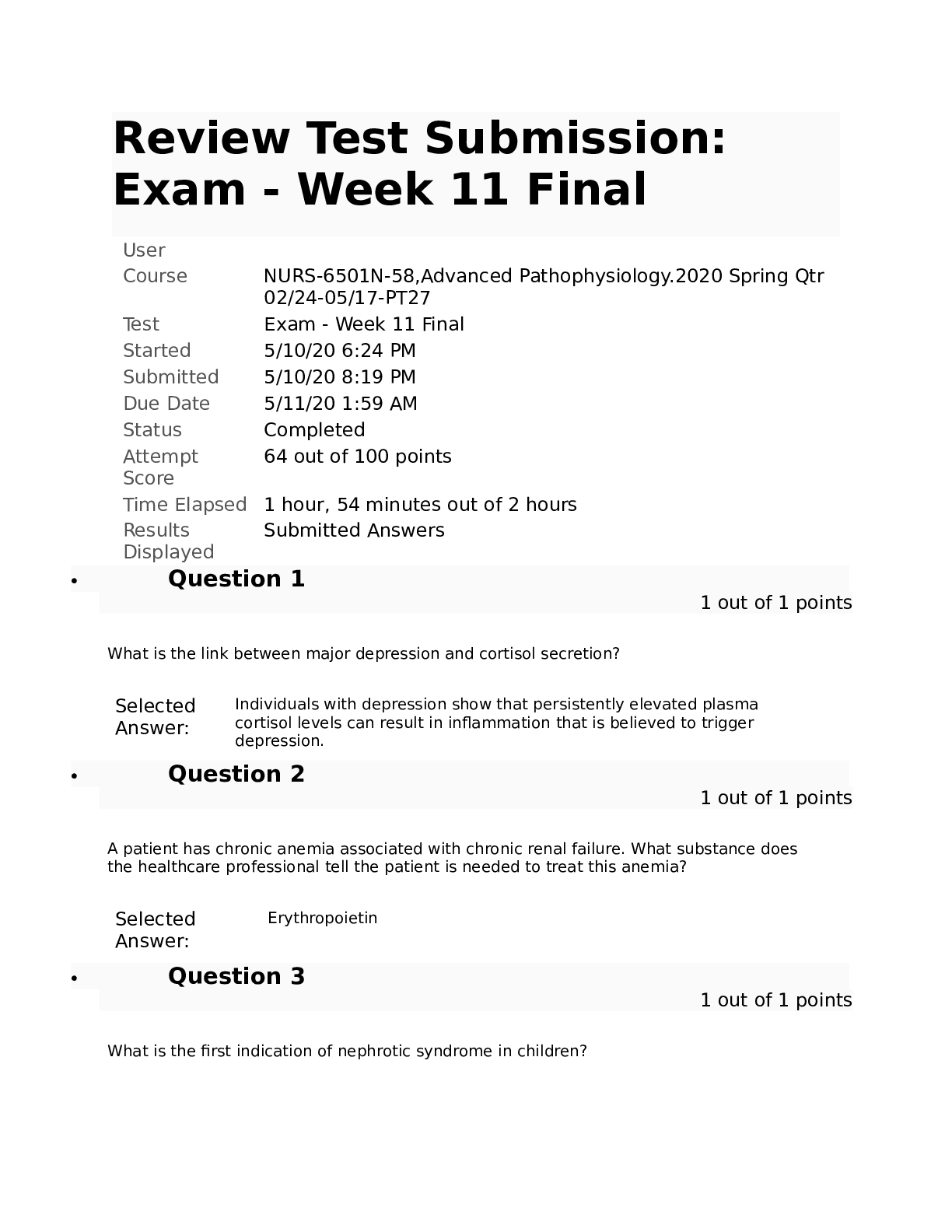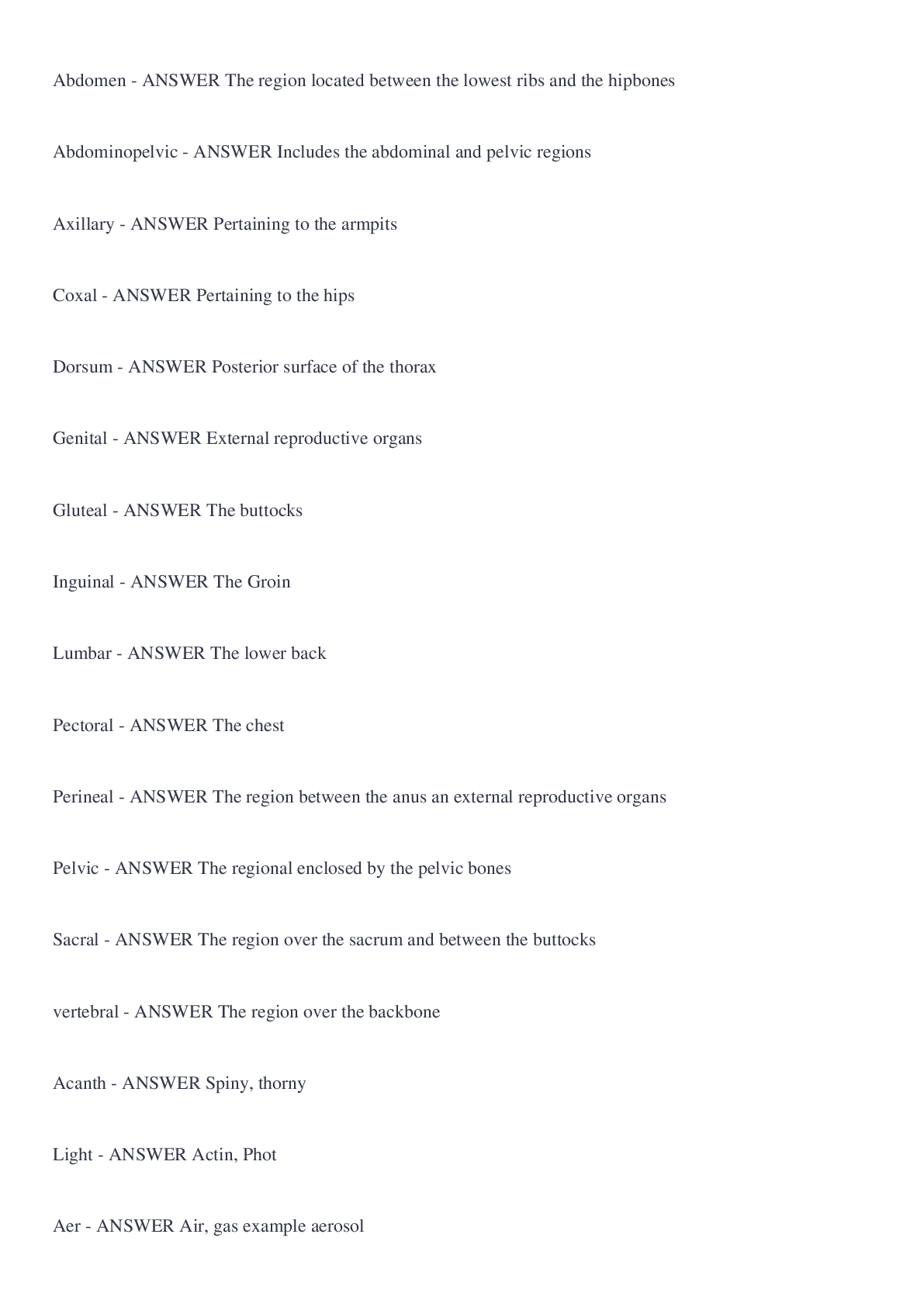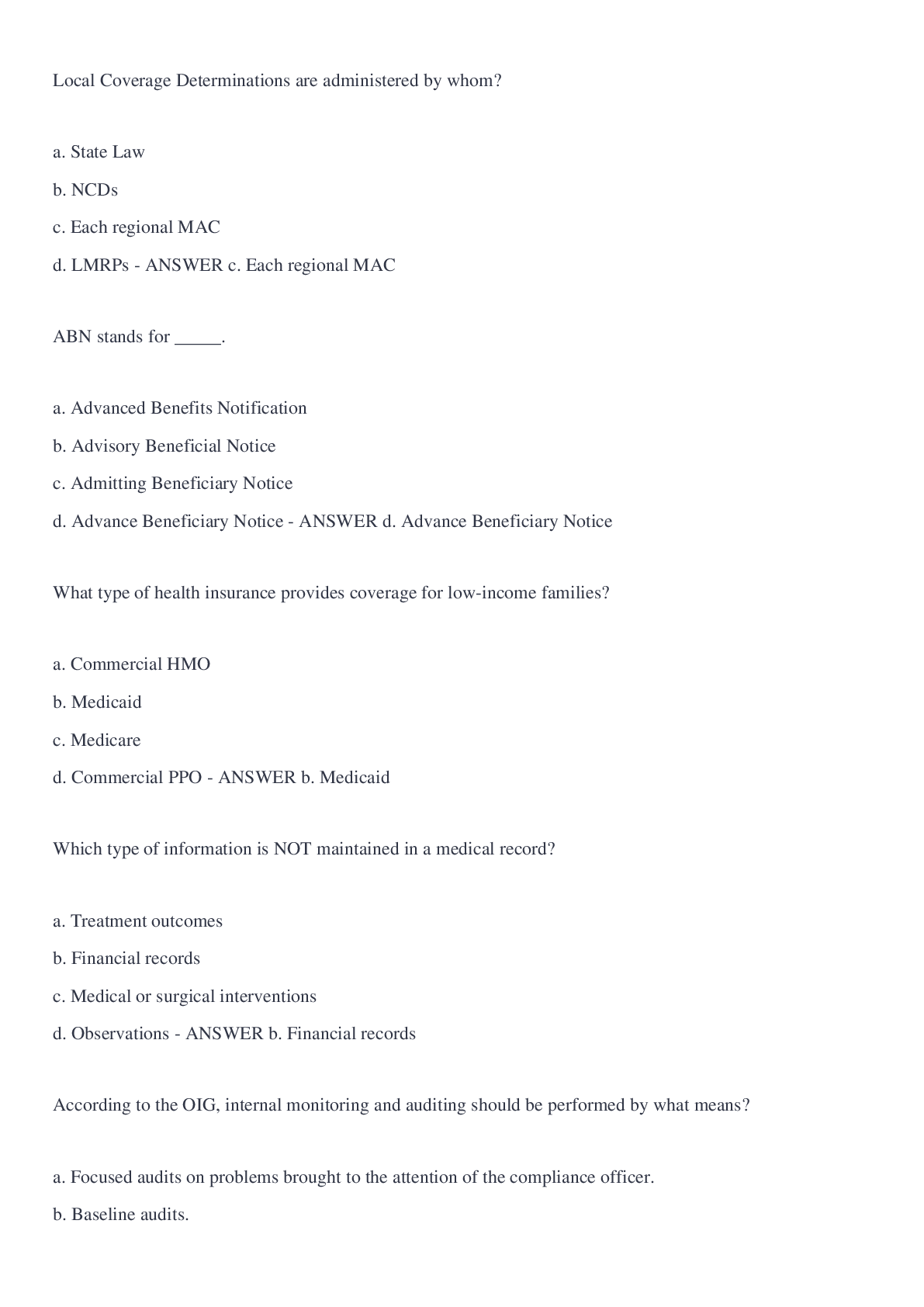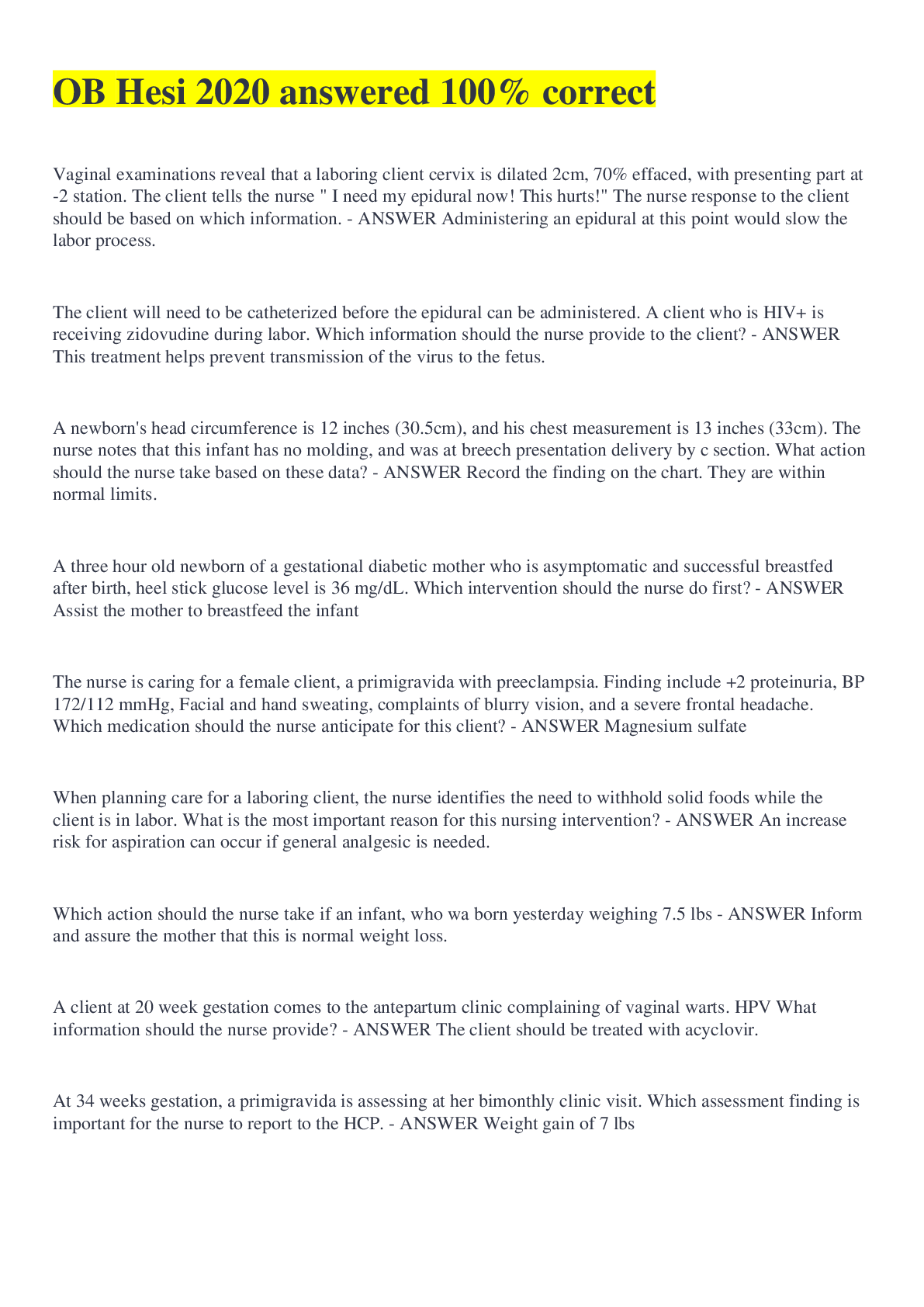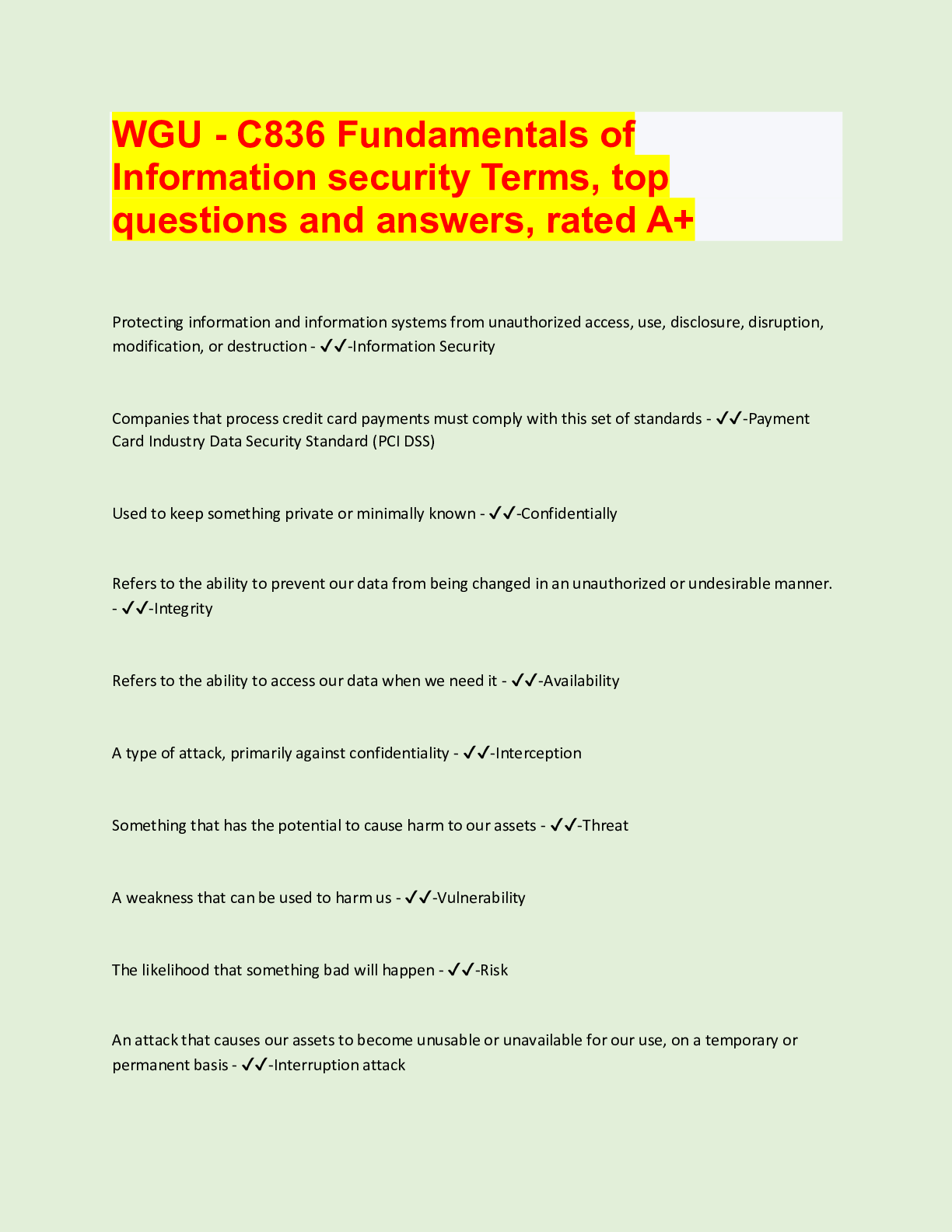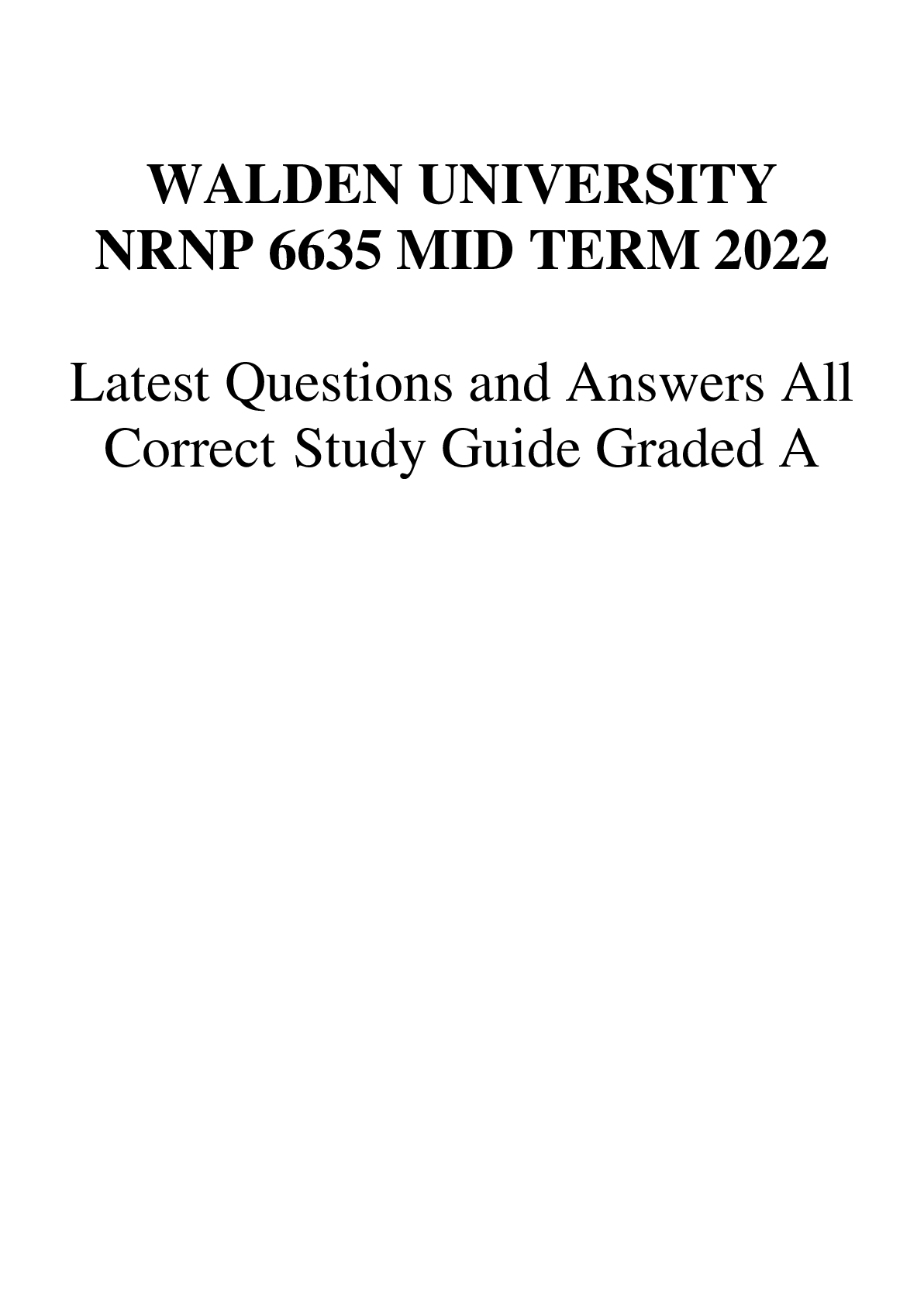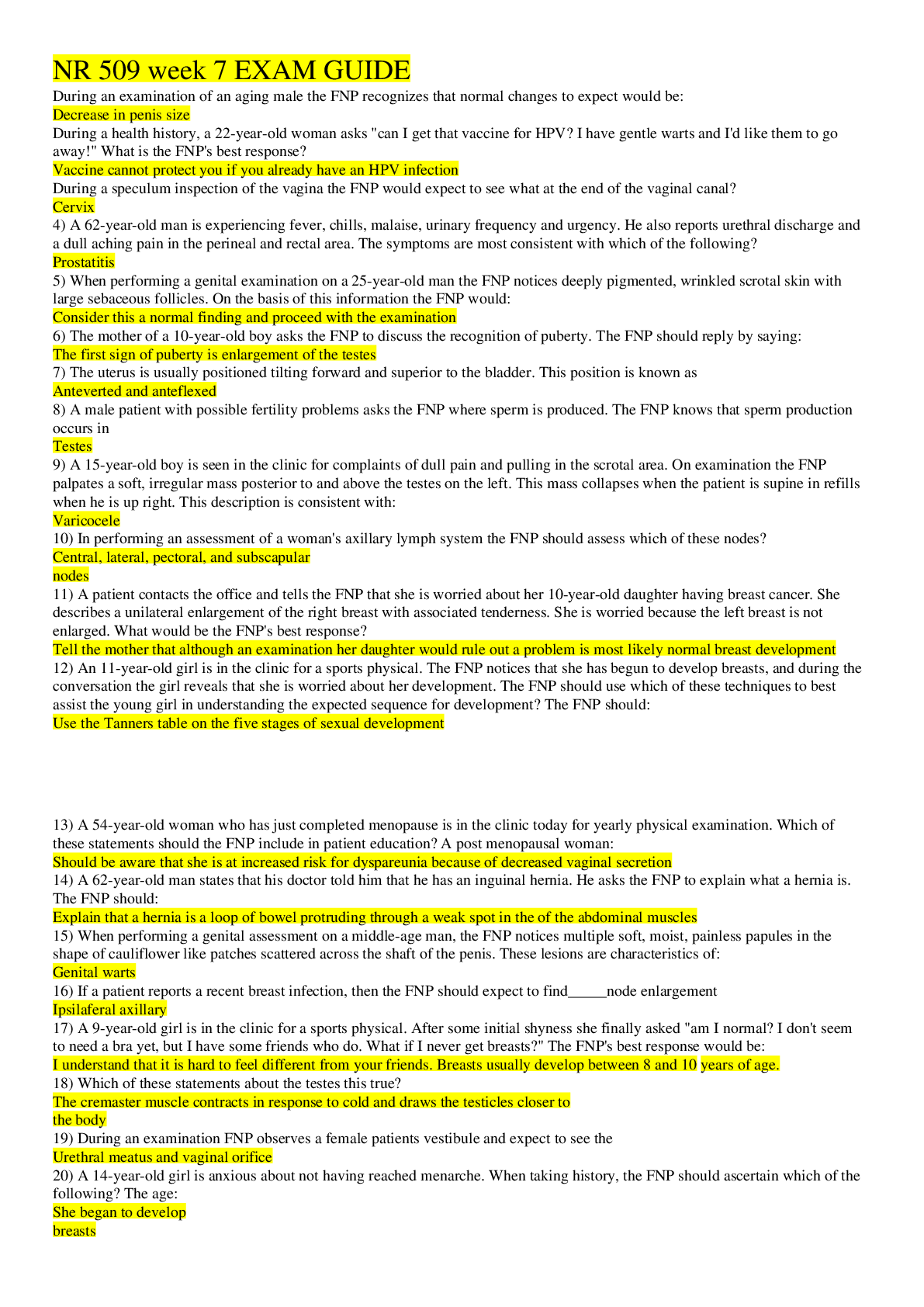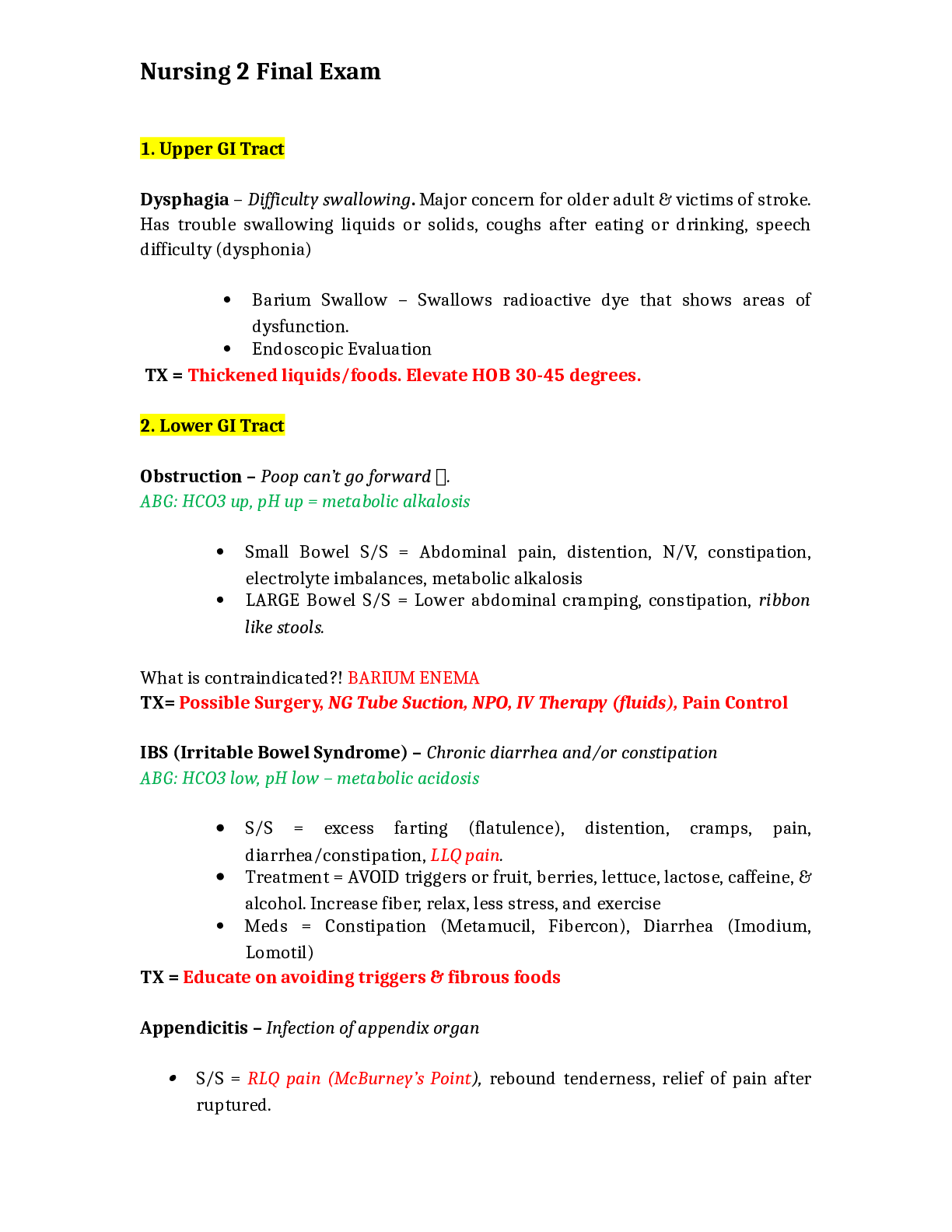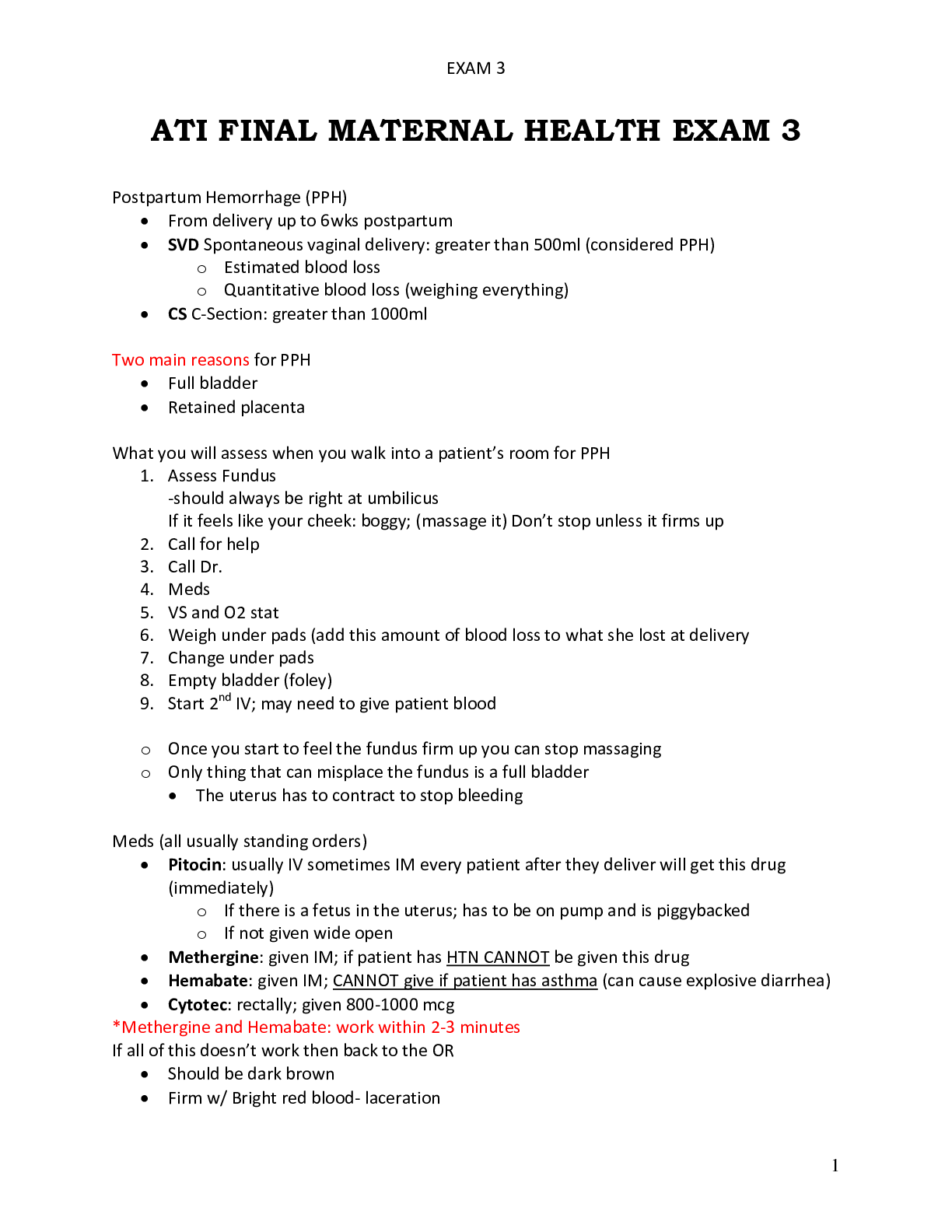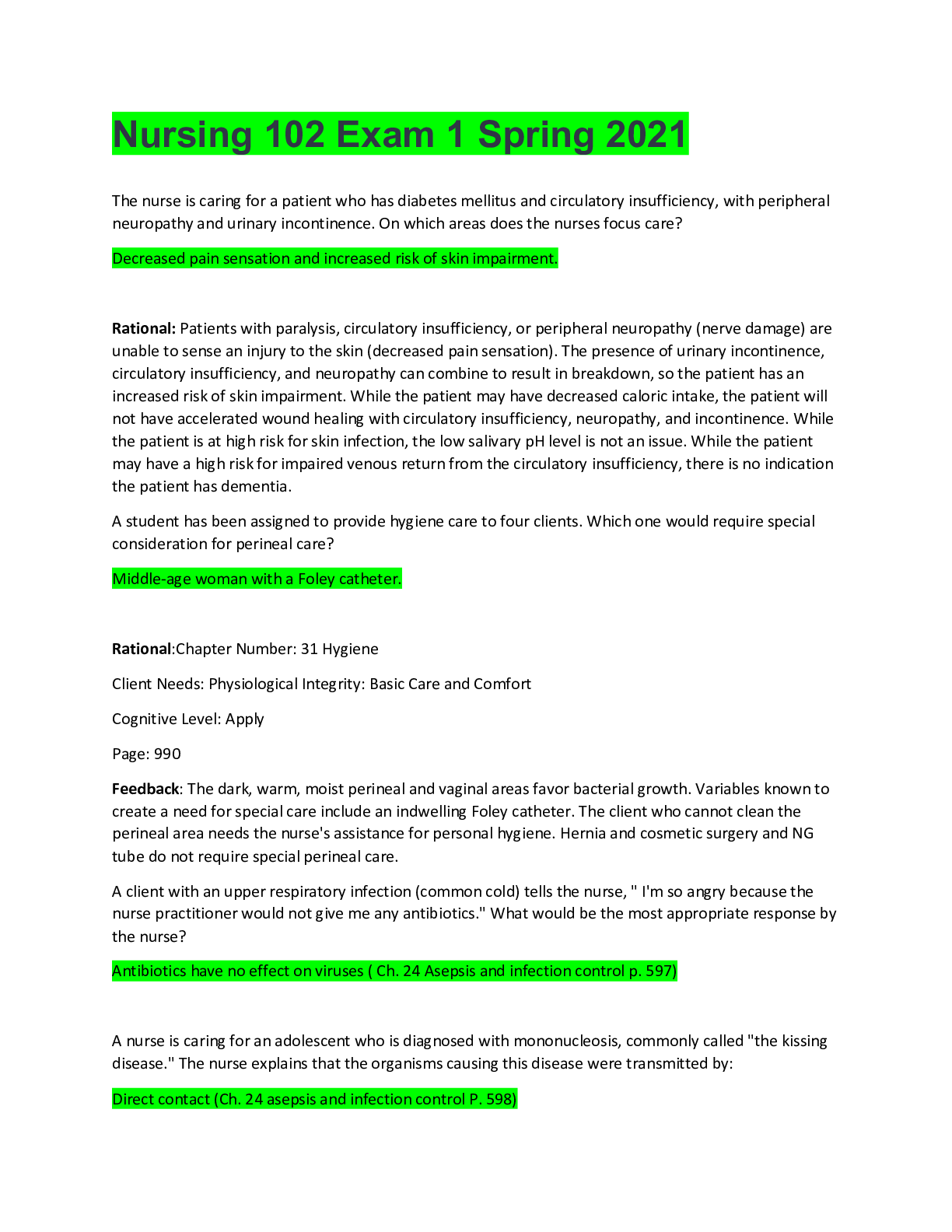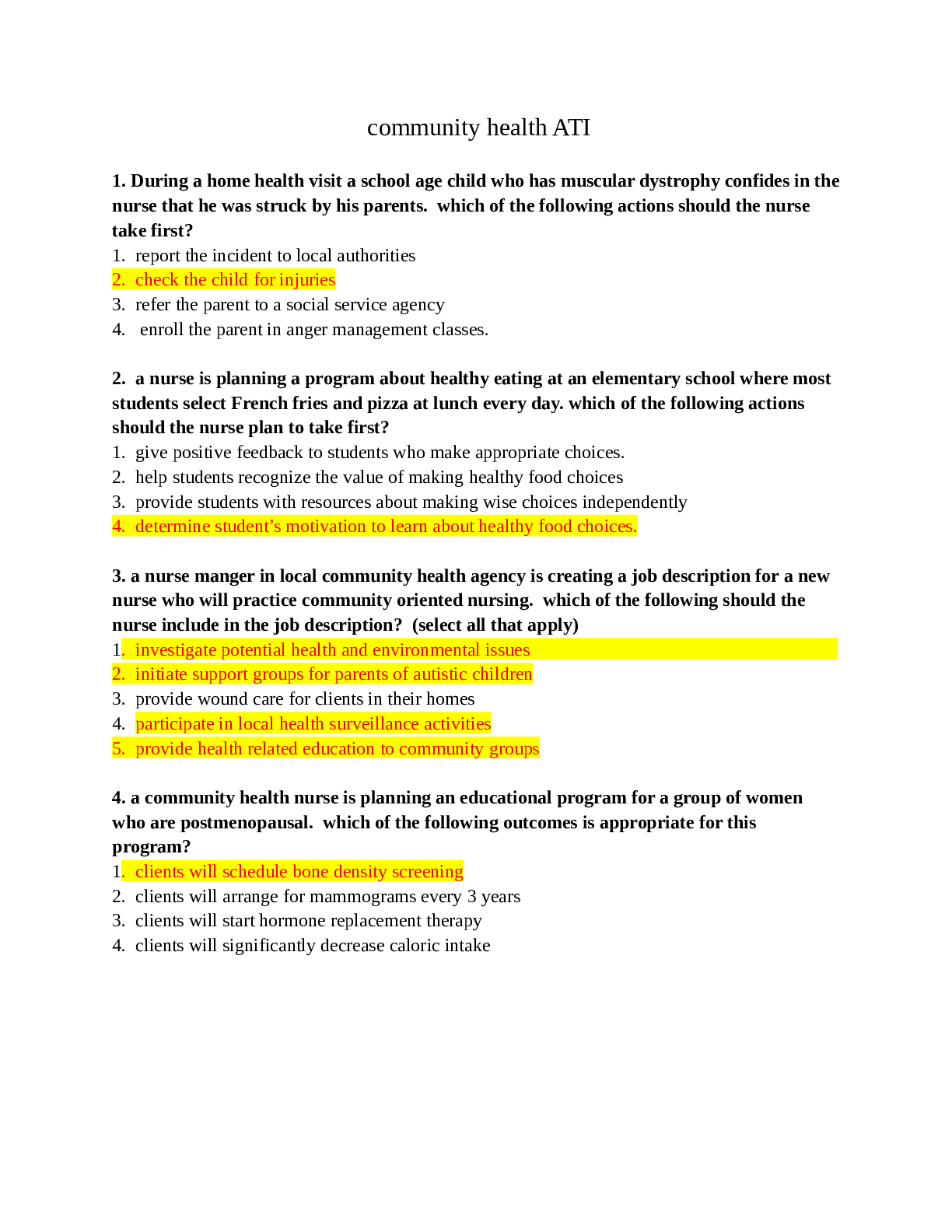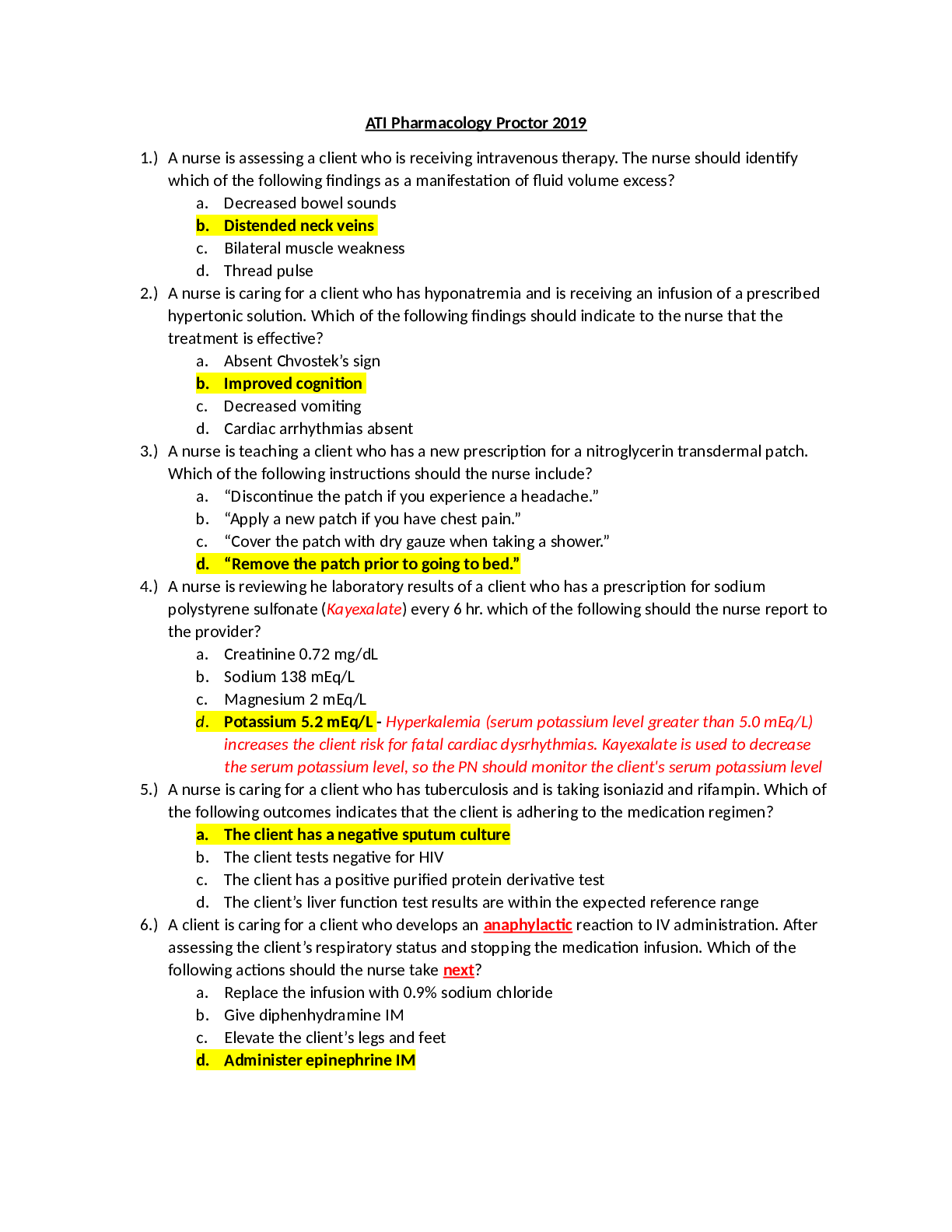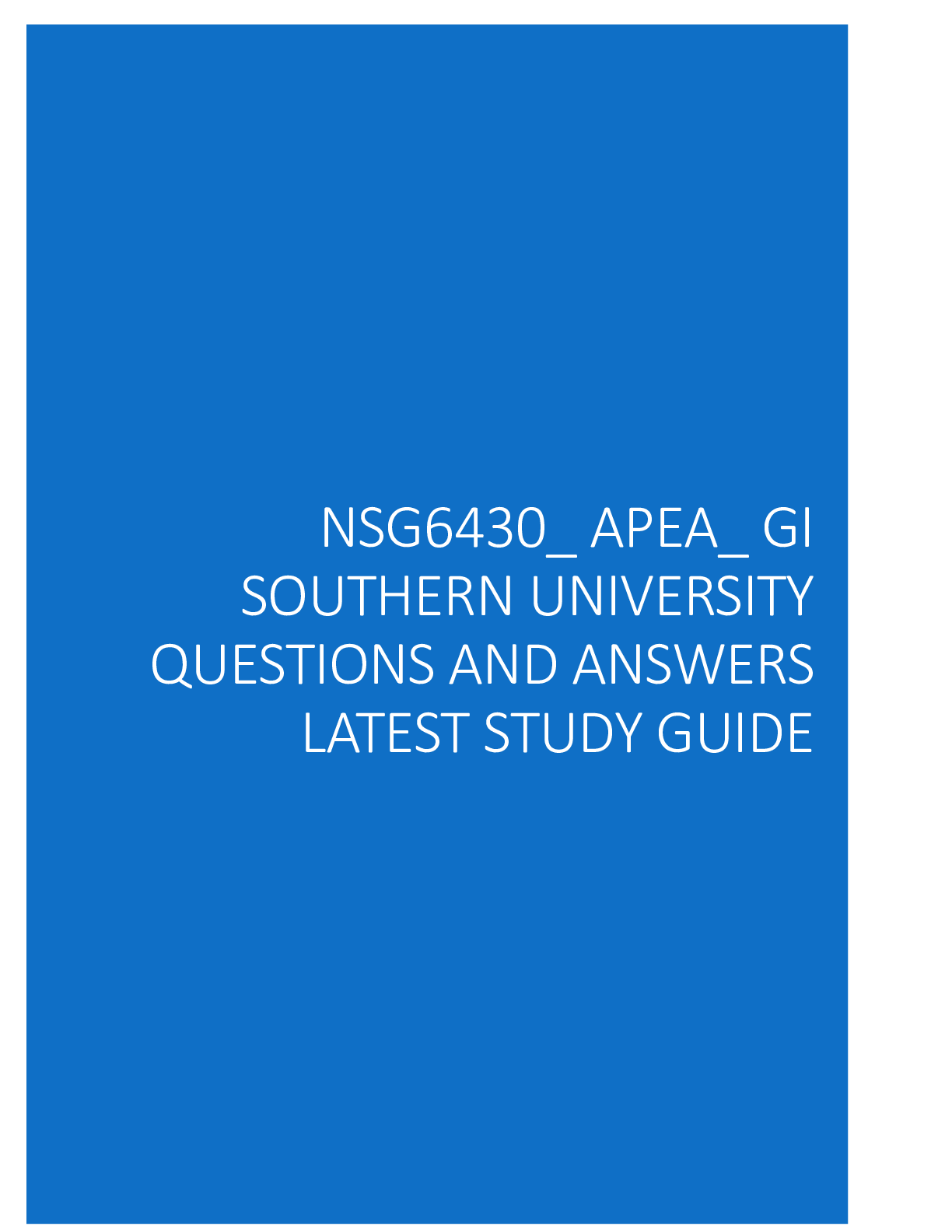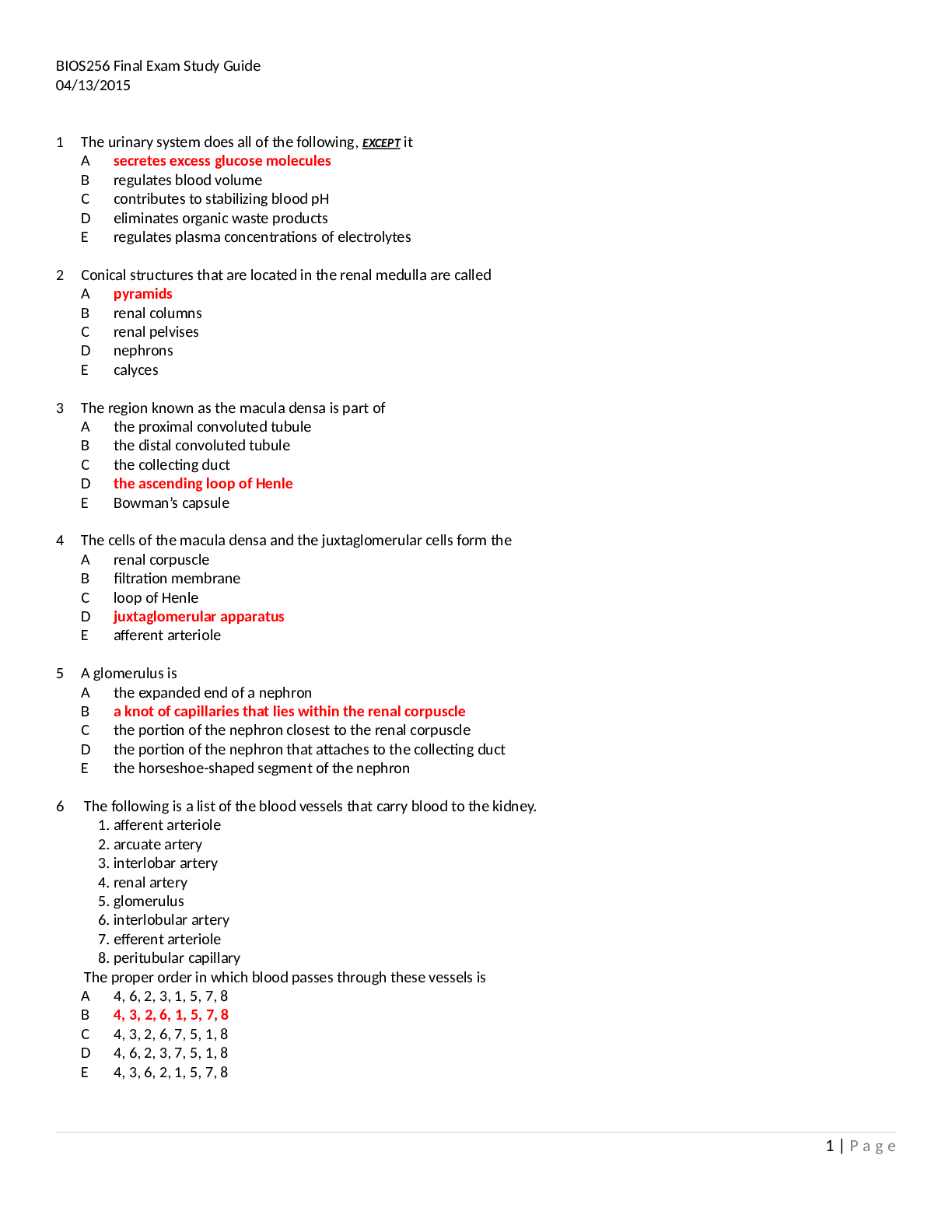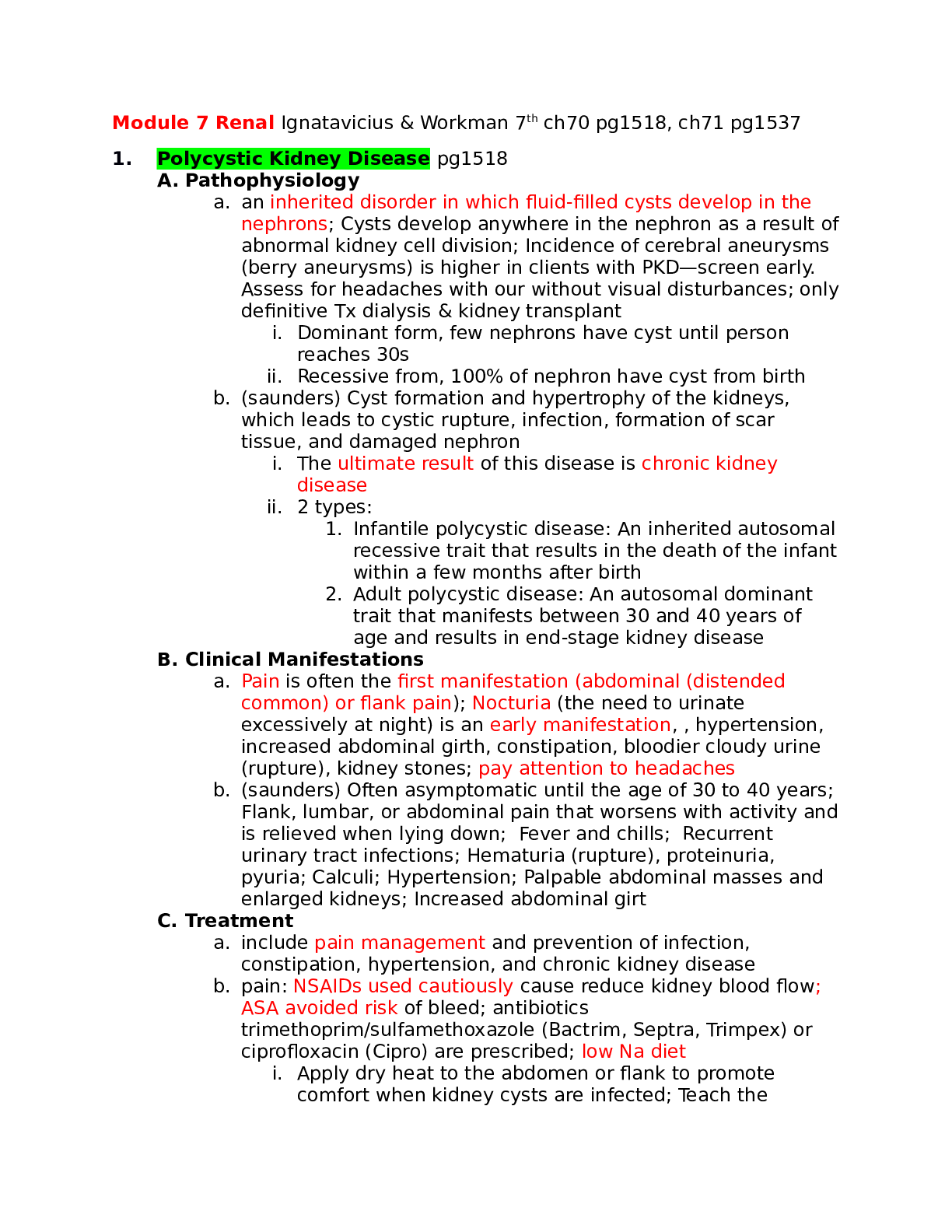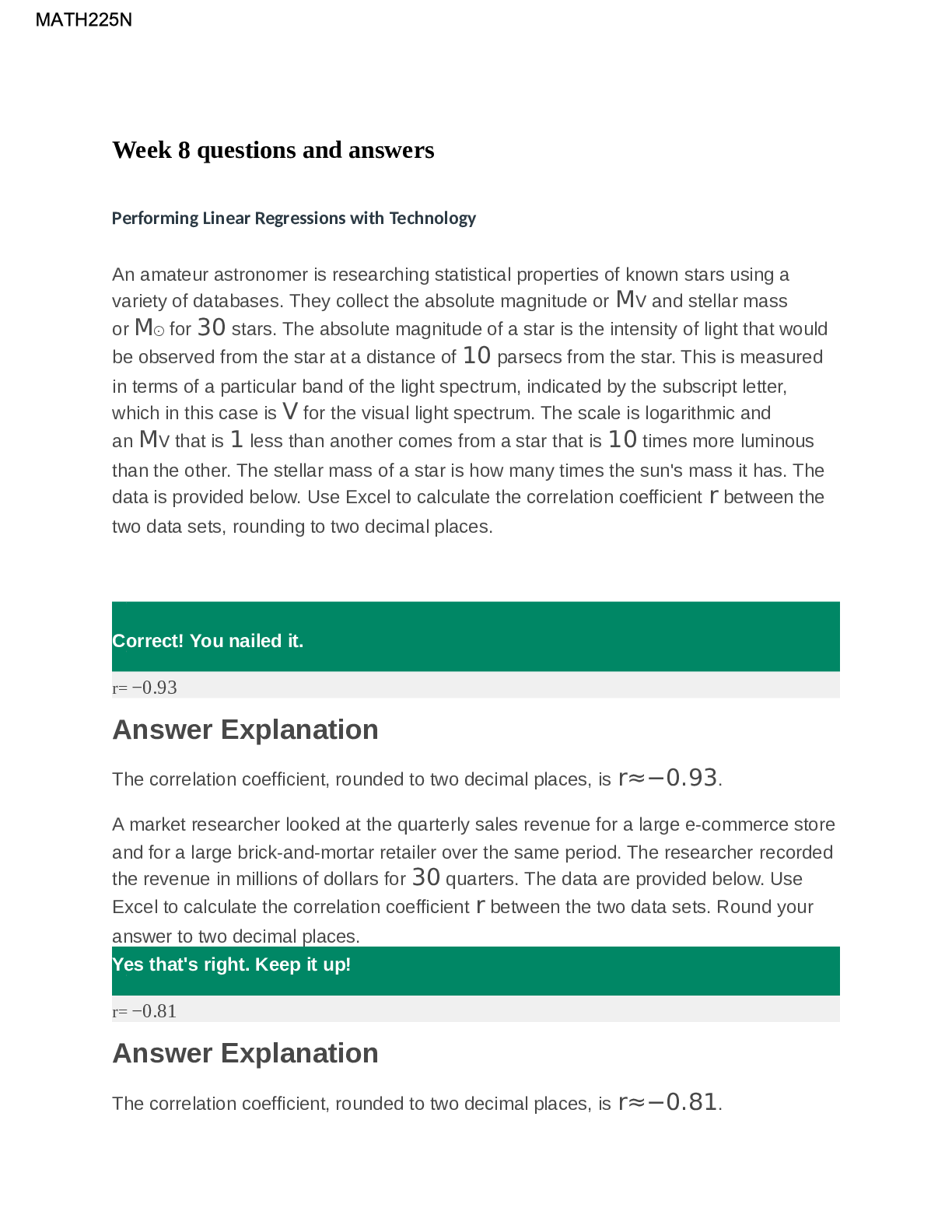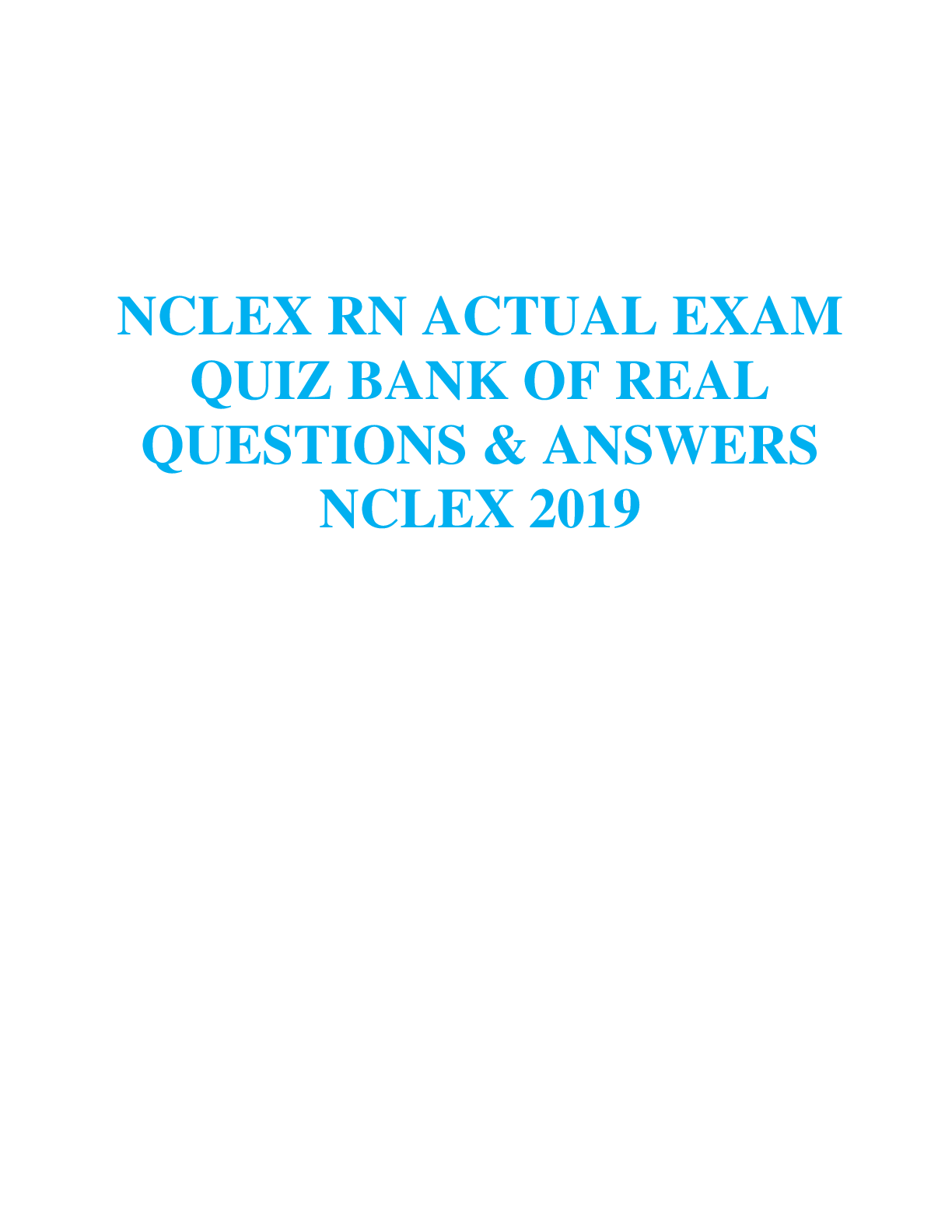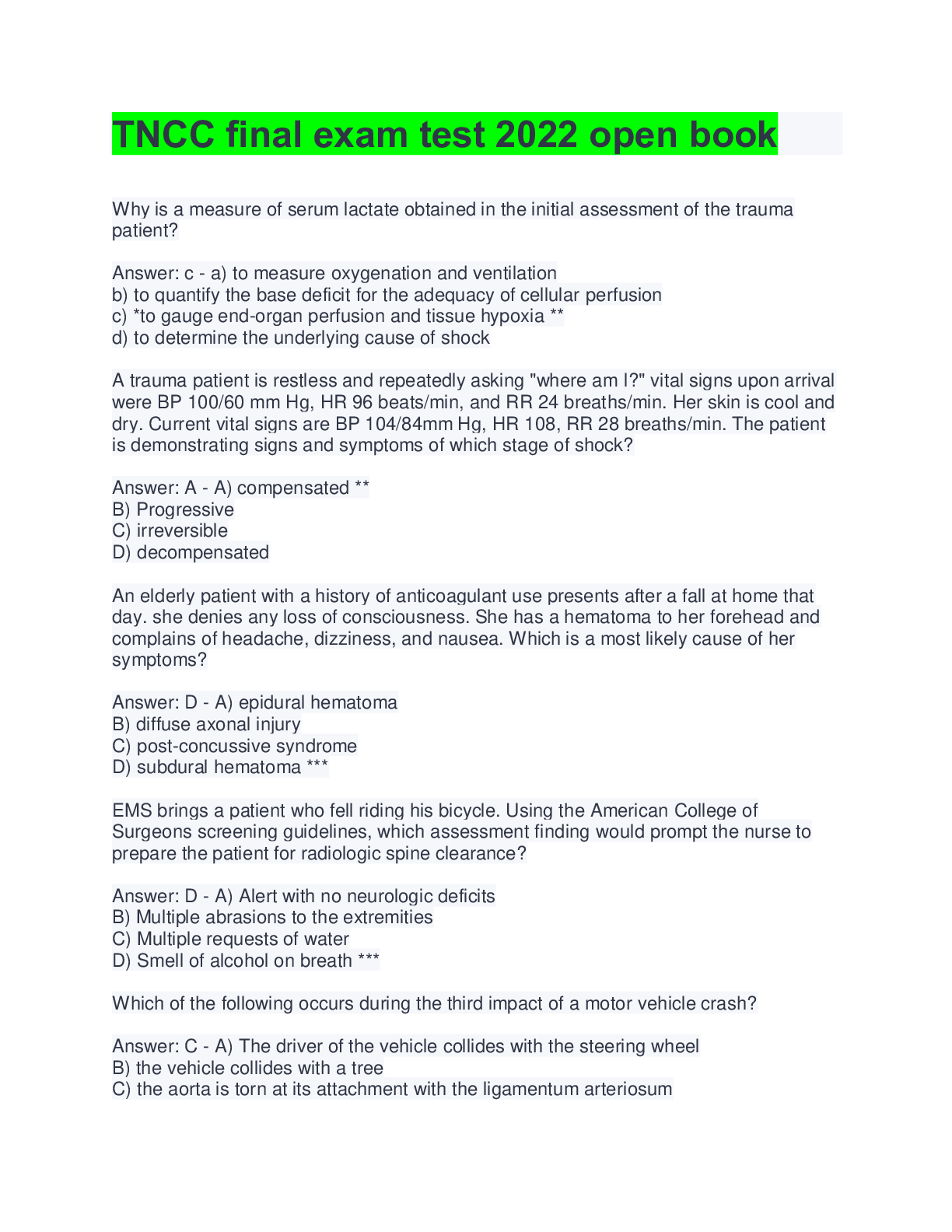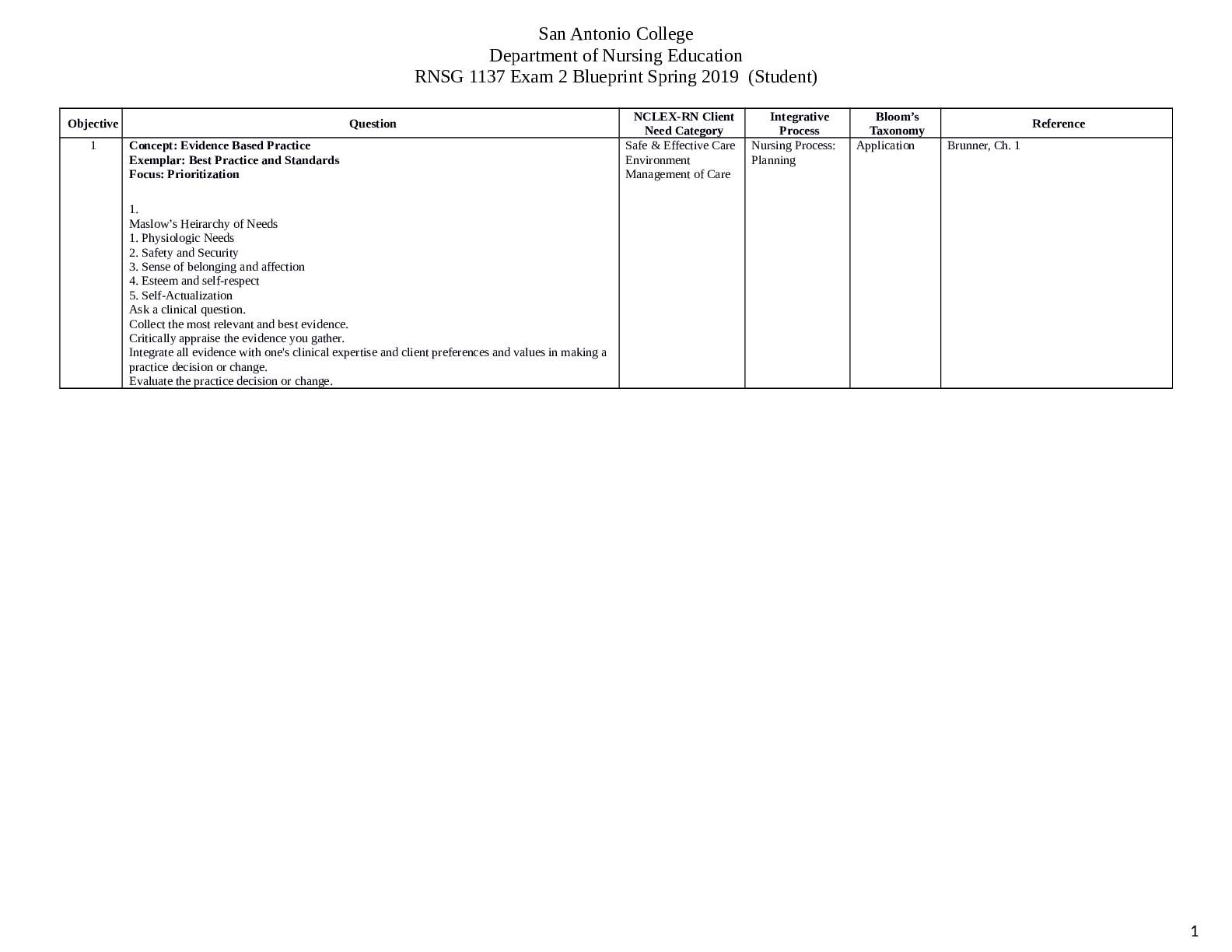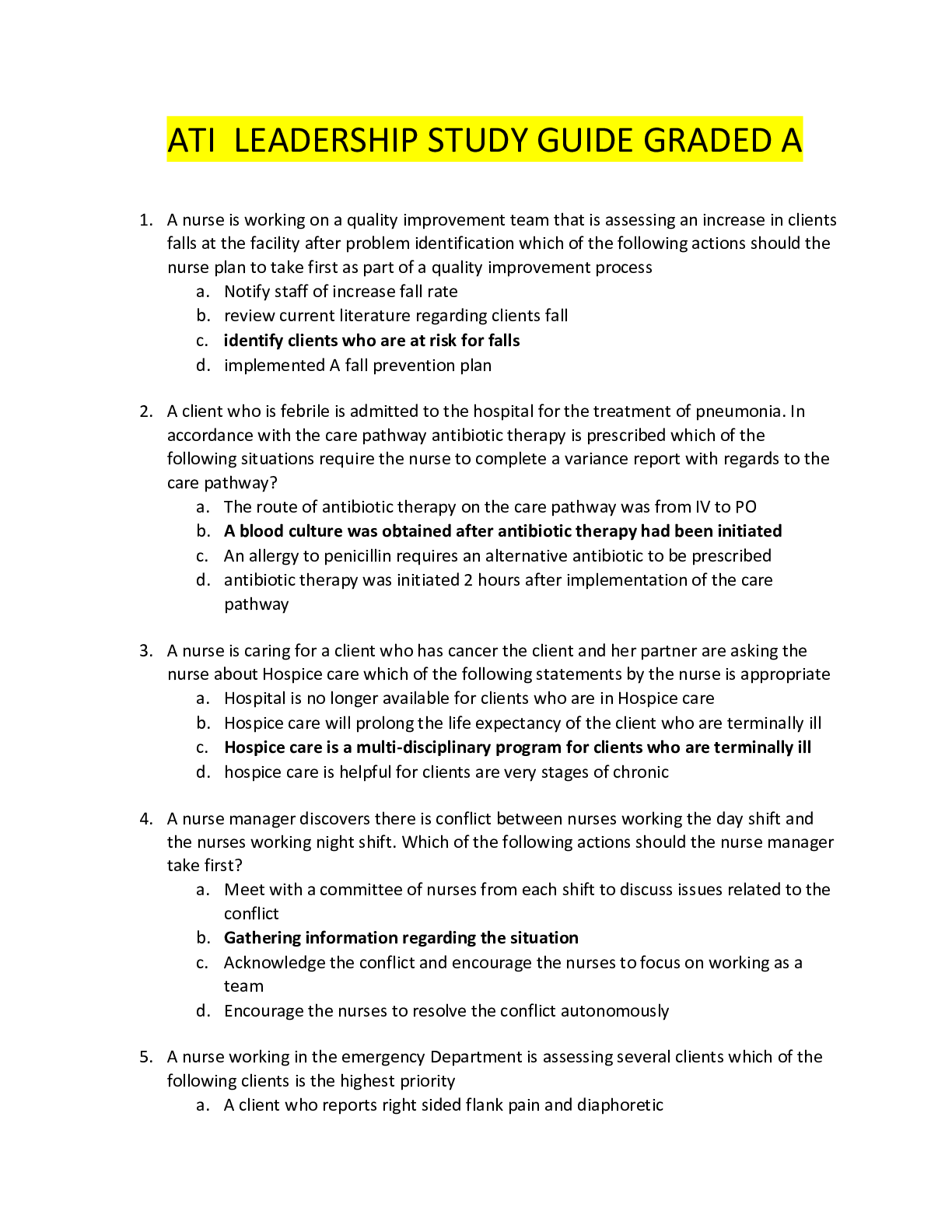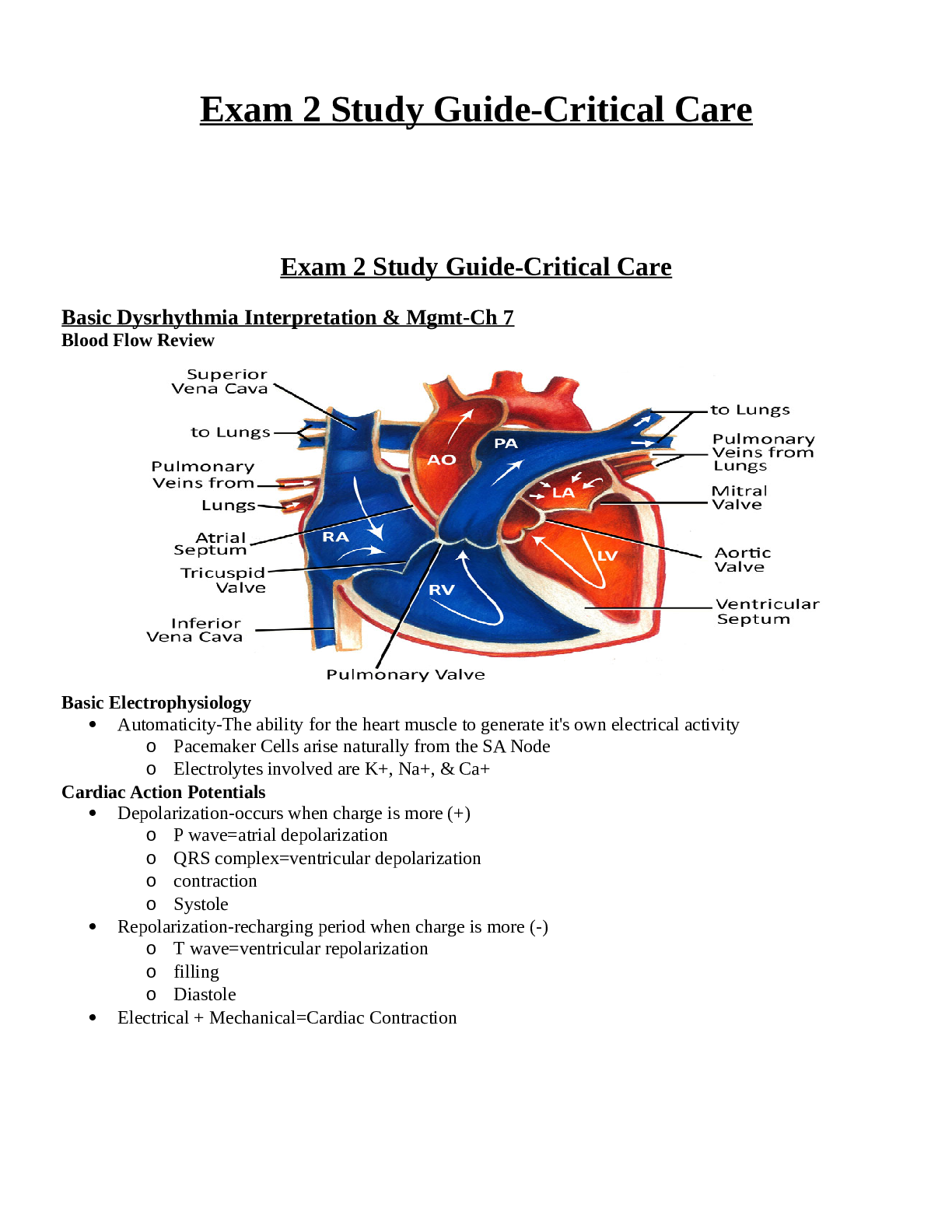AAPC CPC 2020 Exam Study Guide Graded A
Document Content and Description Below
What is medical coding? - ANSWER The process of translating this written or dictated medical record into a series of numeric and alphanumeric codes. What are the two primary types of insurance? - A... NSWER Commercial and government What is medicare part A? - ANSWER Covers inpatient hospital care, as well as care provided in skilled nursing facilities, hospice care, and home health care What is medicare part B? - ANSWER Covered Medically necessary doctors' services, outpatient care, other medical services (including some preventive service not covered under Medicare Part A What is medicare part C? - ANSWER Combines the benefits of Medicare Part A, Part B, and sometimes Part D. What is medicare part D - ANSWER Prescription drug coverage program available to all Medicare beneficiaries. Private companies approved by Medicare provide the coverage. What is Resource based relative value scale (RBRVS) based off of? - ANSWER Physician work, practice expense, and professional liability insurance. What does medical necessity mean? - ANSWER Whether a procedure or service is considered appropriate in a given circumstance? What is the "reasonable estimate" according to medicare? - ANSWER $100 or 25% What is the HIPAA Privacy Rule? - ANSWER provides federal protections for protected health information when held by covered enitites. what are covered entities under HIPAA - ANSWER health care providers (doctors), Health plans (Insurance companies, & Healthcare Clearinghouse What is HITECH? - ANSWER Health Information Technology for Economic and Clinical Health Act When should a ABN be signed? - ANSWER When a service is not expected to be covered by Medicare? What OIG document should a provider review for potential problem areas that will receive special scrutiny in the upcoming year? - ANSWER OIG Work Plan What are root words? - ANSWER The base of the word. blephar/o - ANSWER eyelid bucc/o - ANSWER cheek cholecyst/o - ANSWER gallbladder Colp/o - ANSWER vagina cyst/o - ANSWER fluid sac or pouch, urinary bladder derm/o - ANSWER skin encephal/o - ANSWER brain Enter/o - ANSWER intestine hem/o, hemat/o - ANSWER blood my/o - ANSWER muscle Myel/o - ANSWER spinal cord, bone marrow onych/o - ANSWER nail Oste/o - ANSWER bone phleb/o - ANSWER vein pulm/o, pulmon/o - ANSWER lungs synov/i - ANSWER synovial fluid, joint, or membrane What is a prefix? - ANSWER typically is attached to the beginning of a word to modify or alter it's meaning Ab- - ANSWER away from Ad- - ANSWER toward, near Ante- - ANSWER before Ec-, Ecto- - ANSWER out, outside End/o - ANSWER in, within Mon/o - ANSWER one poly- - ANSWER many, much post- - ANSWER after, behind -centesis - ANSWER puncture, tap -desis - ANSWER binding, fusion -ectomy - ANSWER excision, surgical removal -graphy - ANSWER act of recording data -pexy - ANSWER surgical fixation -plasty - ANSWER plastic repair, plastic surgery, reconstruction -tripsy - ANSWER crushing Anterior (ventral) - ANSWER Toward the front of the body Posterior (dorsal) - ANSWER toward the back of the body Medial - ANSWER Toward the midline of the body Lateral - ANSWER Toward the side of the body Proximal - ANSWER nearer to the pint of attachment or to a given reference point Distal - ANSWER further from the point of attachment or from a given reference point superior (cranial) - ANSWER Above, toward the head Inferior (caudal) - ANSWER below; toward the lower end of the spine Superficial (external) - ANSWER Closer to the surface of the body Deep (internal) - ANSWER closer to the center of the body Sagittal - ANSWER Cuts through the midline of the body from front to back, dividing the body into right and left sections Frontal (coronal) - ANSWER Cuts at a right angle to the midline from side to side, dividing the body into front (anterior) and back (posterior) sections Transverse (horizontal) (axial) - ANSWER Cuts horizontally through the body, separating the body into upper (superior) and lower (inferior) sections The human body has four catergories? - ANSWER Cell, Tissue, Organs, and Systems What are cells? - ANSWER basic unit of all living things What is tissue - ANSWER group of similar cells performing a specific task what is muscle tissue - ANSWER produces movement what are the four parts of connective tissue - ANSWER adipose tissue, cartilage, bone, and blood How many body cavities are there? - ANSWER five The cranial cavity - ANSWER is a space inside the skull, or cranium, containing the brain the spinal cavity - ANSWER is the space inside the spinal column containing the spinal cord the thoracic - ANSWER chest cavity containing the heart, lungs, esophagus, trachea, bronchi, and thymus pelvic - ANSWER space containing the urinary bladder, certain reproductive organs, part of the large intestine, and the rectum Abdominal cavity - ANSWER space containing the lowest portion of the esophagus, the stomach, intestines (excluding the sigmoid colon and rectum), kidneys, liver, gallbladder, pancreas, spleen, and ureters how many membranes are there in the human body? - ANSWER 5 What is a mucous membrane? - ANSWER line the interior walls of the organs and tubes that open to the outside of the body, such as those of the digestive, respiratory, urinary, and reproductive systems. What is serous membrane? - ANSWER line cavities, including the thoracic cavity and internal organs. The pleura covers the lungs, the heart, is covered by the pericardium: the peritoneum lines the the abdominopelvic cavity and covers the organs within synovial membrane - ANSWER line joint cavities and are composed of connective tissue. They secrete synovial fluid into the joint cavity so that bones can move freely. meninges - ANSWER composed of three connective tissue membranes found within the dorsal cavity, and serve as protective covering of the brain and spinal cord. The meninges from outer layer to inside layer are dura mater, arachnoid, and pla mater. Cutaneous membrane - ANSWER the skin, froms the outer covering of the body Two layers of skin make up the human skin - ANSWER Epidermis and Dermis Epidermis is composed of how many layers - ANSWER four to five layers Stratum corneum - ANSWER also called the horny layer; outermost layer stratum lucidum - ANSWER clear layer. The stratum lucidum layer is normally found only on the palms of the hands and the soles of the feet stratum granulosum - ANSWER granular layer of cells. They accumulate two types of granules; keratohyalin granules, and lamellated granules Stratum spinosum - ANSWER composed of prickle cells statum basale (straum germinativum) - ANSWER deepest of the five layers, basal cells The dermis has how many layers - ANSWER two layers Stratum papillare - ANSWER thin superficial layer interlocked with the epidermis stratum reticulare - ANSWER thick layer of dense, irregular connective tissue How many structures does hair have? - ANSWER Two; hair follicle and the shaft - ANSWER [Show More]
Last updated: 1 year ago
Preview 1 out of 6 pages
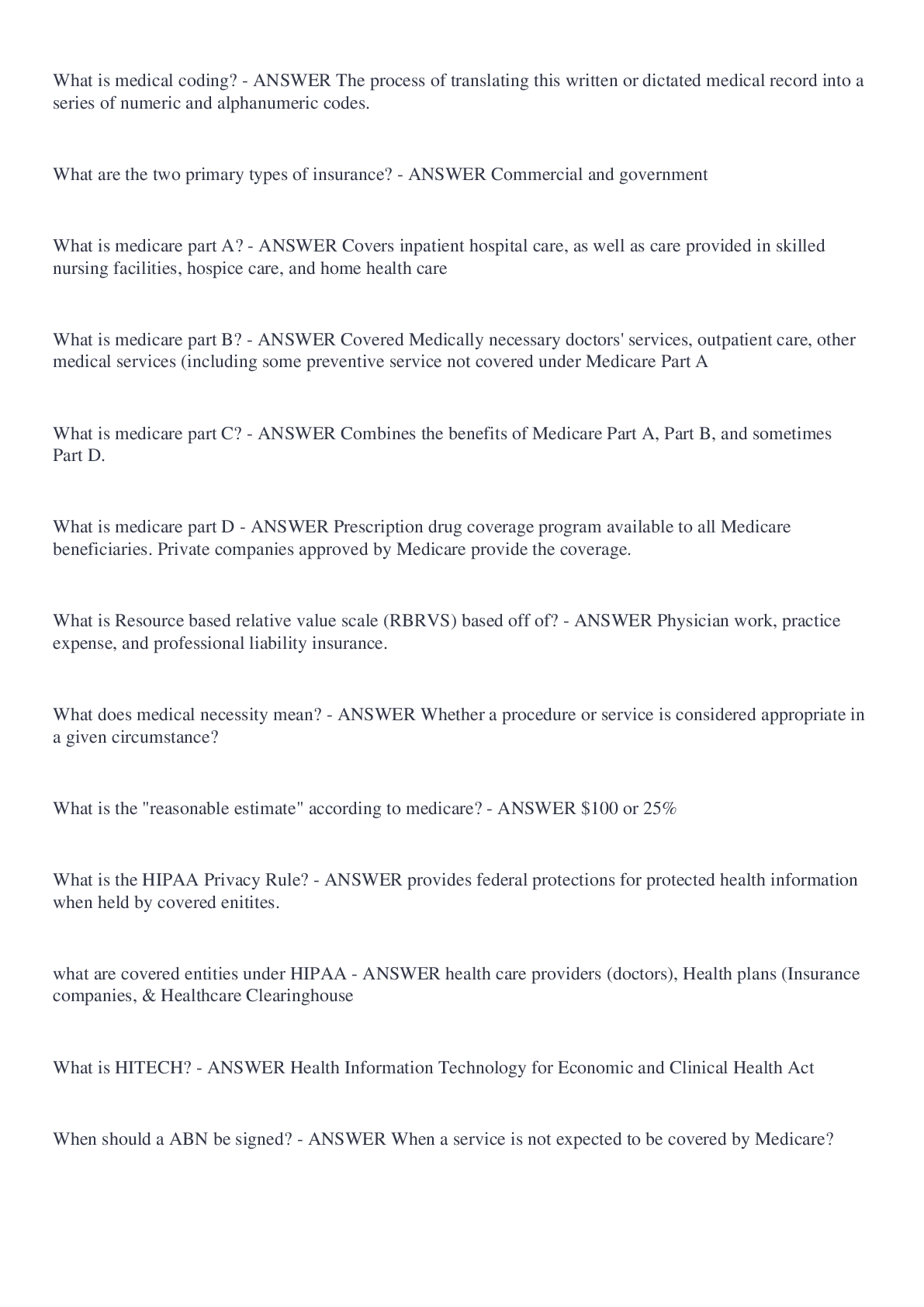
Reviews( 0 )
Document information
Connected school, study & course
About the document
Uploaded On
Aug 11, 2022
Number of pages
6
Written in
Additional information
This document has been written for:
Uploaded
Aug 11, 2022
Downloads
0
Views
36





